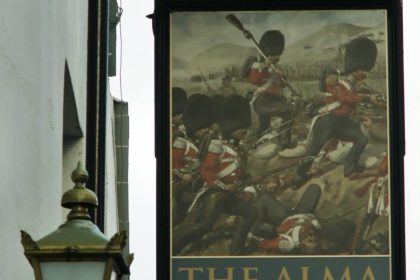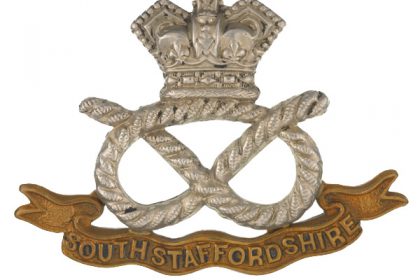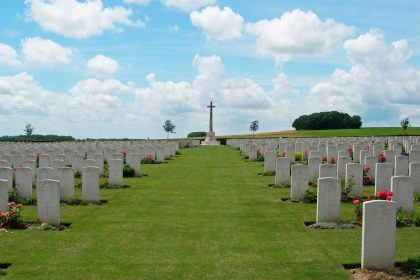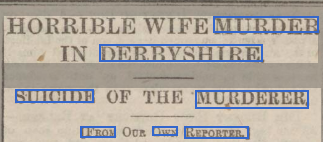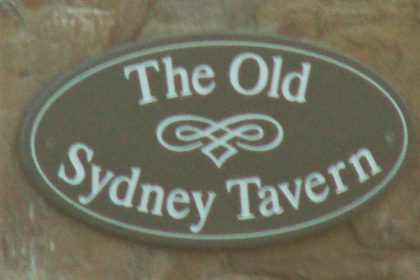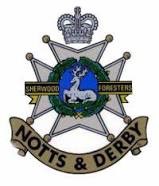The area often described in Nineteenth Century directories as “the township and straggling village” of Mosborough was probably once an ancient manor in its own right, and as such its boundaries would have been well defined and jealously guarded. Falling within the administrative county of Derbyshire until boundary changes in 1967, Mosborough lies within South Yorkshire, upon the south-facing flank of the valley of the river Rother as it follows its northerly course from Eckington, where it was joined by the river Moss, towards Beighton and the stream called Short Brook coming down from Halfway.
Taking as our starting point the northern bank of the Rother at its confluence with the river Moss, the boundary with the manor of Eckington stretched upwards to the west along the tree-lined course of the Moss and is still clearly visible. The boundary follows the Moss river roughly in a line to the south of Pipworth Lane, passing first beneath Rotherham Road and then Sheffield Road, slightly to the north of You Can Hire, formerly the old Atco works. It then follows a meandering route through fields to the north of Eckington’s parish church of St. Peter and St. Paul to Mill Road and the site of what was once the manorial corn mill, now demolished, and one of only two ancient bridges between Eckington and Mosborough at the junction of Gashouse Lane and Mill Road.
Mosborough’s boundary with Eckington then continues westwards through fields along the Moss towards Cadman’s Wood. Upstream lies the site of the Carlton Wheel, a former water-powered grinding wheel, and the nearby Seldom Seen Engine House, now a carefully preserved Scheduled Monument, which may have housed an overhead winding engine for the former Plumley Colliery.
Beyond the Carlton Wheel, the Moss continues through the ancient woodlands of Bower cinder Hill and Twelve Acre Wood, which once formed the northern edge of Eckington’s medieval deer park, to the site of a second grinding wheel; the evocatively named ”Never fear Wheel”, with its mill pond. Criss-crossing the fields to the north can be seen the vestiges of routes used by the Mosborough sickle smiths to lead their donkeys to the wheels, laden with sickles for grinding.
A little way west of here, the Mosborough boundary turns north, leaving the Moss to follow the course of an un-named tributary under Plumley wood Lane and towards Kent Wood. At the point where the stream forks near Newlands, the boundary follows the eastern branch to the stream’s source at the northern extremity of Kent Wood, where for the first time it takes to tracing a hedge line to the west of Haven Farm (No. 1), and towards High Lane at the eastern end of Ridgeway village, which was the old highway from Gleadless and the west to Mosborough.
Here, the boundary crosses the highway to follow a hedge line to the west of what is now Ribblesdale Drive where it meets up with a tributary of the Ochre Dyke heading north towards Birley Wood. From this high point (around the 600m. contour) eastwards it follows the Ochre Dyke and forms the ancient boundary with the manor of Beighton, representing also the northern boundary of the former ecclesiastical parish of Eckington. The regular field pattern in this location reveals the effect of the enclosures of the late Eighteenth Century on what was Mosborough’s common land around Mosborough Moor.
Beyond Birley Wood, it meets Moor Valley Road, the former Turnpike Road between Sheffield and Mosborough, at a point to the south of the present Birley Moor Garden Centre, following the Ochre Dyke as it flowed first north eastwards towards Hackenthorpe and then south east to skirt the northern edge of Hanging Lea. From here, it follows the course of a tributary of the Ochre Dyke, due south between Hanging Lea and Westfield Plantation, curving in an easterly direction at the southern end of the Plantation to meet a field boundary close to what is now the Moss Way at Westfield. At this point, the boundary follows hedge lines once more, due south until it meets the source of the Short Brook, which marks the boundary through the extensive new housing development down beyond Shortbrook Primary School and beside what were once the fields of Waterthorpe Farm.
It is still possible to follow the course of the Short Brook to where it meets Eckington Way (B6053) at Holbrook and then beyond, in a tree-lined route, first under New Street and then under Rother Valley Way, past the former Holbrook brickyard (now Massey Truck Engineering) and the Midland Main railway line to meet the River Rother once more near to the southern end of Rother Valley Country Park.
From here, Mosborough’s manorial boundary with Eckington follows the northern bank of the River Rother as it meanders southward roughly along the line of the railway, till it returns to our starting point at Pipworth Lane.

